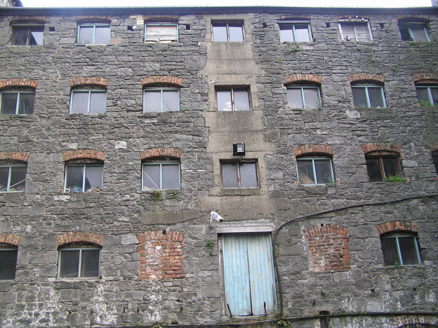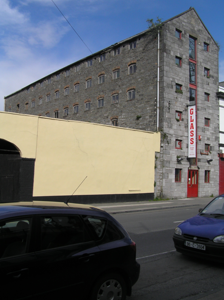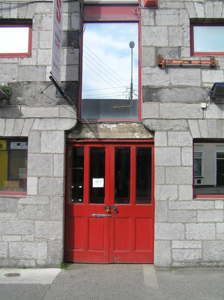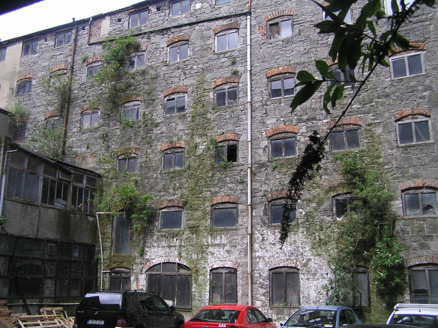Survey Data
Reg No
21518007
Rating
Regional
Categories of Special Interest
Architectural, Technical
Original Use
Store/warehouse
In Use As
Shop/retail outlet
Date
1730 - 1750
Coordinates
157687, 156878
Date Recorded
02/05/2005
Date Updated
--/--/--
Description
Attached three-bay six-storey gable-fronted former corn store building, built c. 1739, with full-height loop window, thirteen-bay west-facing side elevation, and multiple-bay east elevation facing central courtyard. Built on the site of a mill that awas demolished in 1739. Flanking the two corn store buildings is a six-bay, two-storey link building, c. 1850, which encloses the courtyard to the east, shared with adjacent corn store, and now in separate ownership. Pitched sheet metal roof with concrete coping and plastic rainwater goods. Parapet wall conceals roof structure over six-bay section. Squared coursed snecked tooled ashlar limestone façade with random rubble limestone side elevations. Ruled and lined render elevation to link building with parapet entablature forming a limestone ashlar frieze architrave, blank rendered frieze and limestone ashlar cornice. Square-headed window openings with limestone voussoirs and uPVC windows, uPVC windows with panels to each floor occupying the full-length of the loop window. Loop window terminating at ground floor in a double-leaf timber and glazed door. Camber-headed brick-arched window openings to side elevations with bipartite timber windows. To six-bay section the openings are linked by a limestone ashlar sill course with limestone ashlar window aprons beneath, and the entablature frieze which forms a lintel architrave above. Replacement uPVC windows. A further projecting cornice surmounts the metal roller shutter blinds below. Continuous fascia board. Projecting sign, c. 1980.
Appraisal
A very plain but substantial former mill building. While seemingly out of context in this Georgian district, Roches Street was once dominated by large scale industrial activity. The vast scale of this structure, and the adjacent corn store, when viewed as an ensemble, forms a monumental and historic element to a streetscape stripped of much of its architectural interest.







